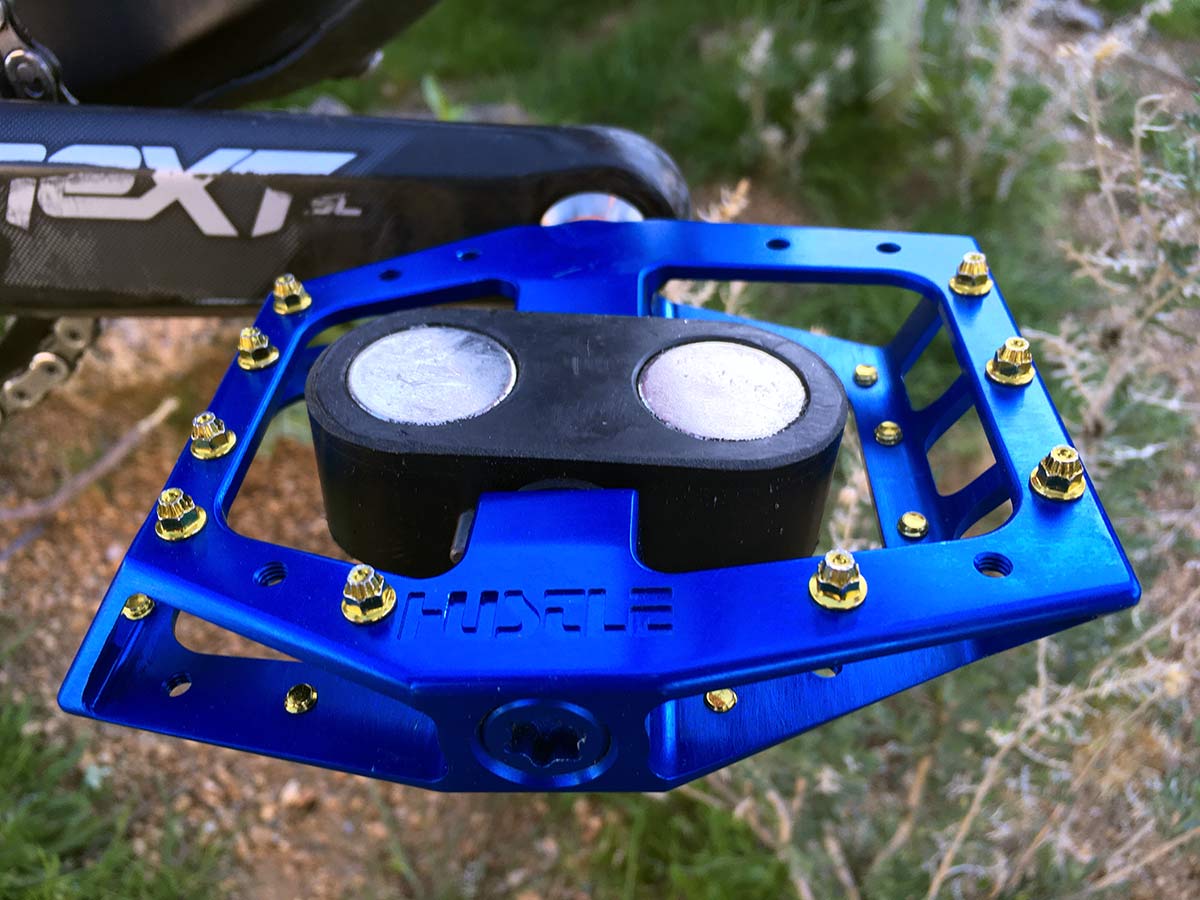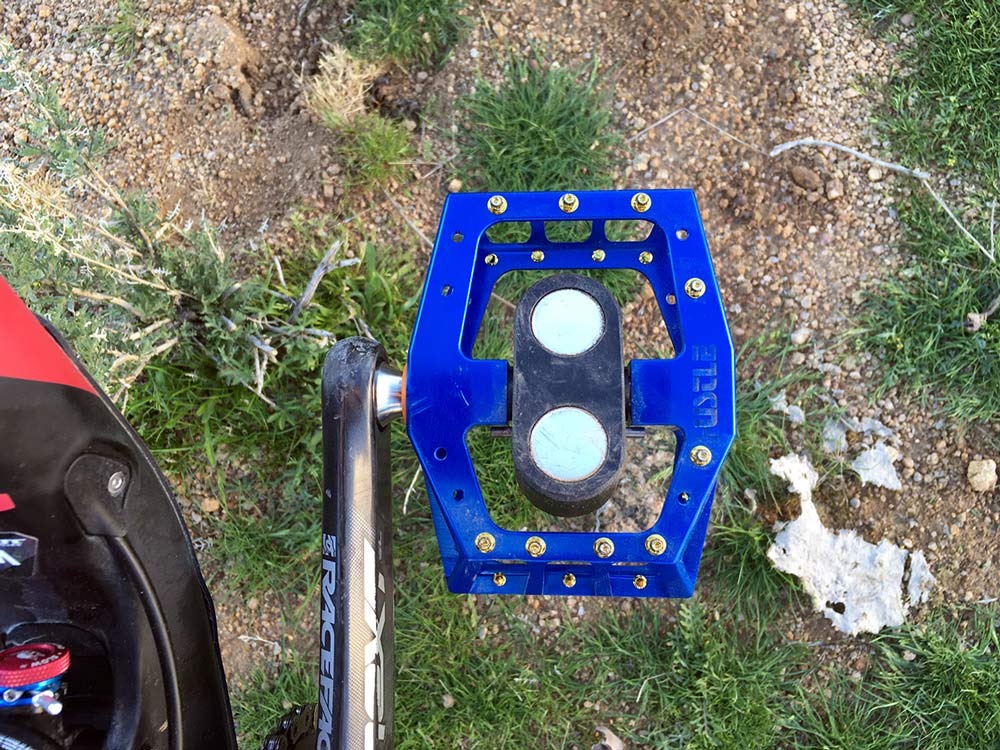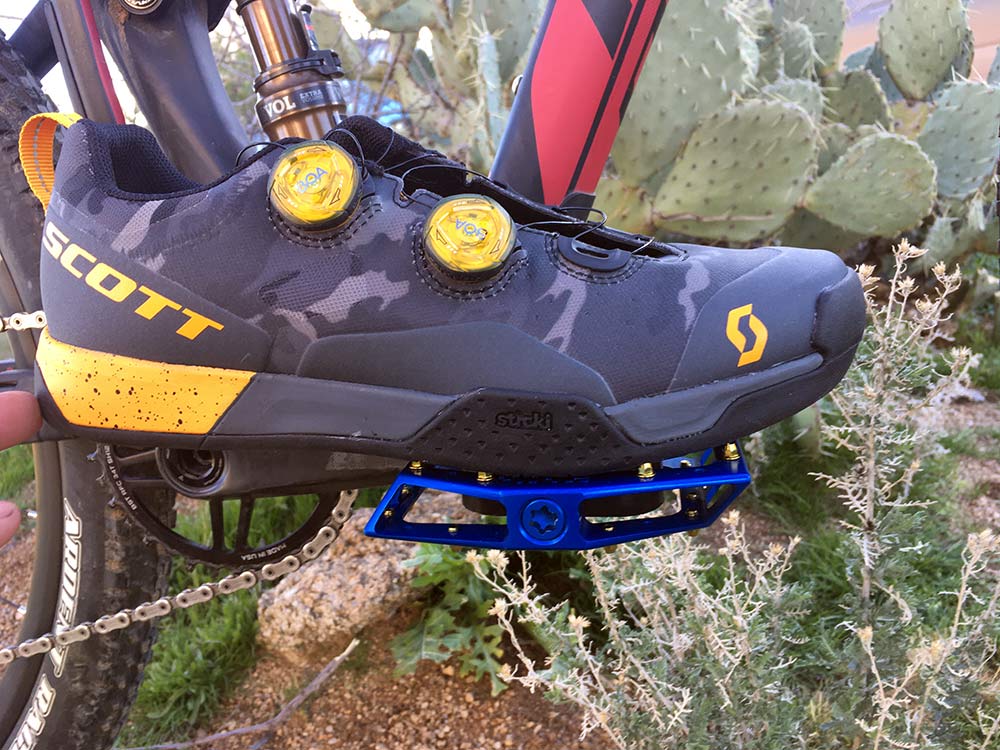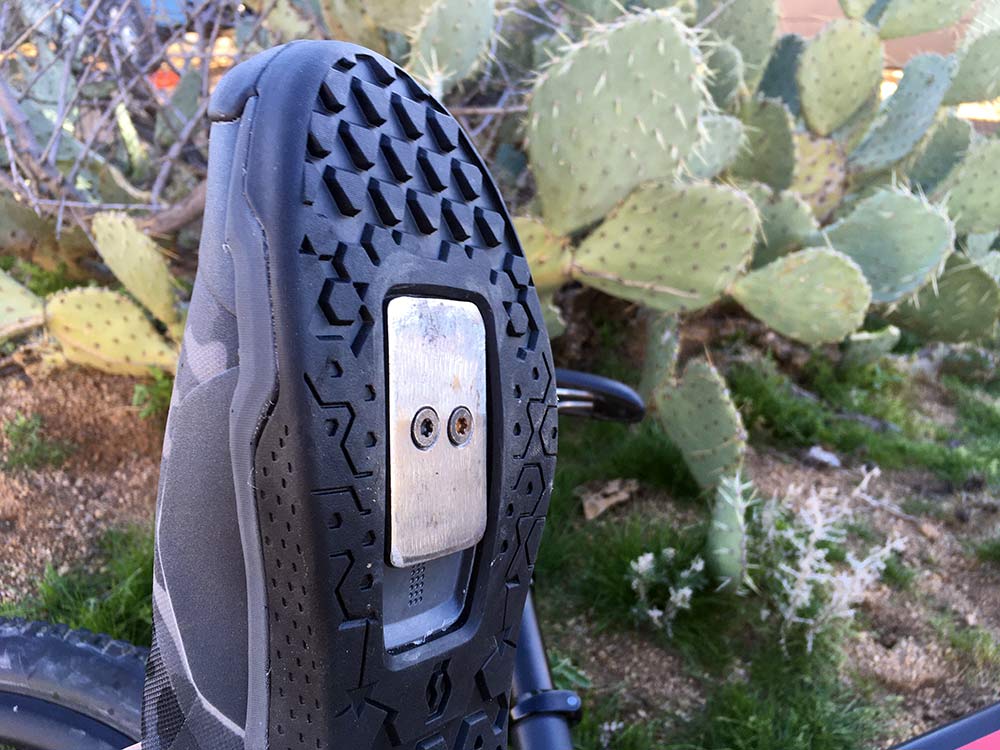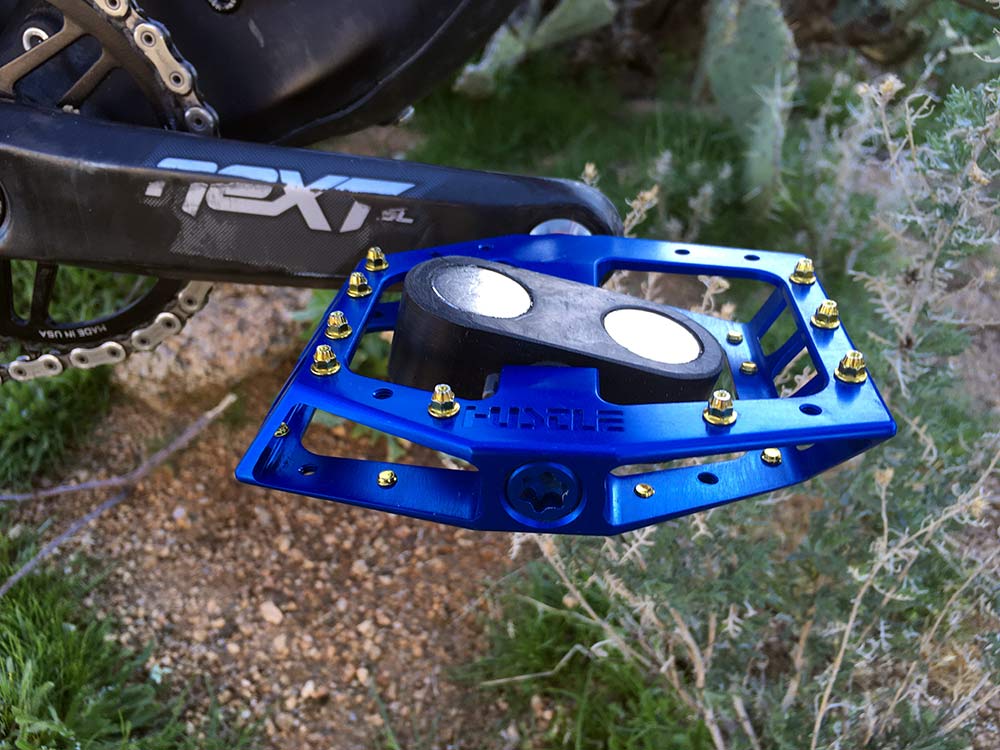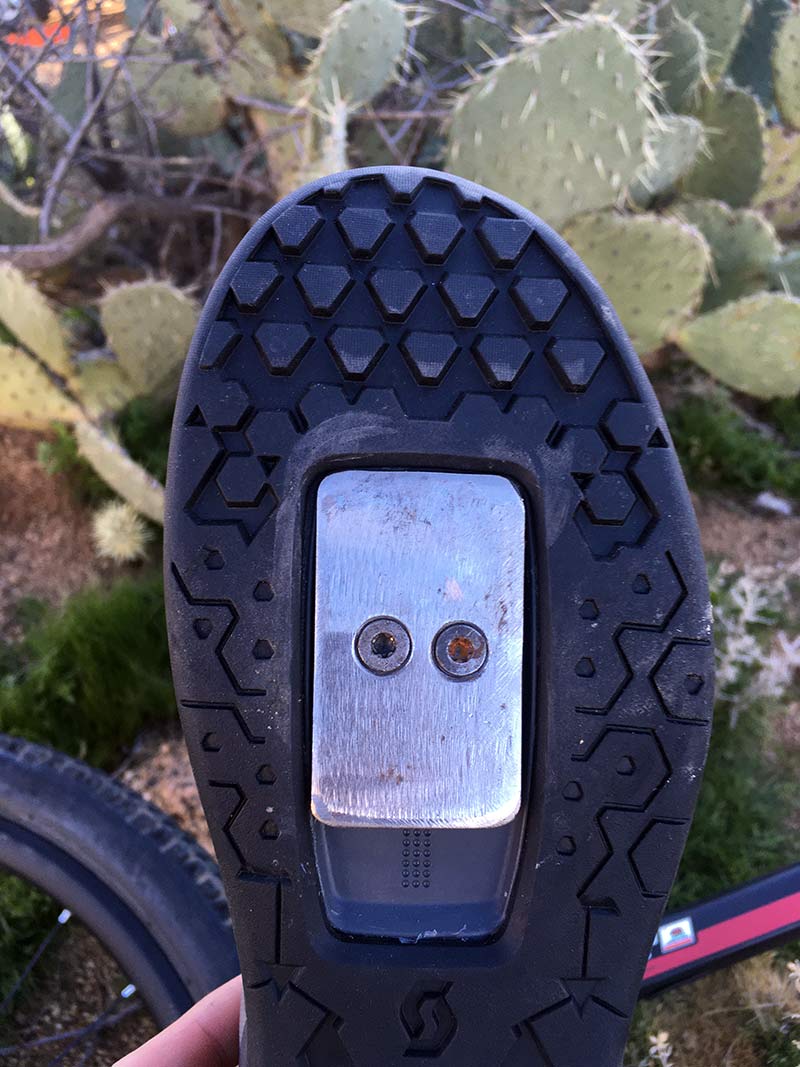It’s problematic and embarrassing to admit… but I’m just as baffled by magnets as the Insane Clown Posse is. Though unlike everybody’s favorite “freethinking” flat-earth murder-clown nu-metal rappers, I don’t believe in “miracles” and instead enjoy the science behind it all. I’m… just not always smart enough to wrap my head around it all. My strengths lie elsewhere. They must. For example… this morning I accidentally poured boiling water over whole coffee beans and blearily stared at the problem for a full minute before my brain finally came up with a solution.
You know?
Despite being assigned to Team Archer (look for that review shortly) for our 24 Hours of Old Pueblo media team, I somehow managed to snake a pair of Team Hustle’s REM pedals for the duration of the race. With four laps at 17 miles each, that gave me 68 miles of test ride time, in a variety of waking states.
How does the Hustle magnetic pedal work?
The Hustle pedal, first teased in January, is based around a neodymium rare earth magnet (REM, get it?). What does that even mean? Glad you asked… because I had to look it up. Apparently, one of the things that makes a neodymium magnet so unique and sought out is its tetragonal crystal structure, meaning that the crystal grains of the material have an extremely strong magnetic pull along certain axes, but not along others.
As the Hustle pedal is based on North/South polarity, this translates to engagement that is extremely strong straight up and down between pedal and shoe. It has 128lbs of pull strength, according to founder Craig. And they get stronger with duration of contact. So that by the end of my lap, the engagement was actually better than at the start.
It’s pretty wild to witness. As your foot approaches the pedal, it snaps right into place. And depending on placement of your foot, you can make that engagement as strong or weak as you like. Obviously it’s strongest when the plate and magnet are completely aligned, and sometimes it would take a few tries before I found that sweet spot, micro-adjusting my foot forward or backward until I could feel the connection.
Is it strong enough for aggressive riding?
During my first lap, I did “unclip” accidentally on a short punchy climb. Standing up and cranking the way I would in standard SPD’s, my right foot disengaged and I faltered for a moment. I kept that in mind and adjusted my pedal stroke accordingly. Focusing less on pulling with each stroke (which I’ve heard can actually be problematic on knees) and focusing more on the pushing through. Despite being more attentive, in those times I wasn’t carefully dodging cholla cacti, I still tried my best to pedal like an idiot, testing how strong the engagement was in various positions and situations.
As strong as it needs to be, it turns out. And I had no subsequent issues as I got used to the position. Disengaging in a pinch was easy as well. A forced dab behind a rider hesitating in a technical section. A full-contact foot/rock strike as I passed another rider as the trail narrowed. A slight twist of the foot (similar to the motion on an SPD) or canting the ankle to the outside would be sufficient to break the up/down pull force of the magnet and the metal place that serves as the “cleat.”
Yeah, but will it fit on my shoes?
Because it’s based on a platform pedal, with the magnets on a rotating axis at the center, the Hustle system has a ton of contact. The magnet, coupled with the sticky rubber of the shoe and the spikes of the pedal gave ample purchase.
Different shoes will obviously have different platforms and soles, and the Scott shoes we were using had a little more forefoot bend, landing somewhere between a performance cleat-based shoe and a flat. What this meant was that the metal plate serving as the cleat was recessed a little more than ideal. In some cases Hustle had shored it up with some self-made shims or shoe goo, but even without that, I was more than happy with my engagement.
As Craig and Tyler mention in this video, a slightly less-strong magnet somewhere in the 80 lbs of pull will be available in the near future for those who may require something that has less umph, but this can also be achieved by using a smaller “cleat.”
I don’t have an official figure on weight, as we were in the middle of the desert and I forgot my scale, but it’s marginally heavier than a traditional pedal. But let me reinforce the “marginally.” And as you can see from the chart below, they’re not ready to make an official weight claim yet, either:
Product is slated to officially launch in late April/early May with a few changes to the production models. Most notably the nylon used to house the REM magnet will be replaced with a more durable alloy (hence the TBD weight). Additionally, various shims will be available to fine tune the cleat fit to the bottom of various fits of shoe.
And yes… I anticipated this question from Bikerumor readers and took it upon myself to ask: “If I’m harboring sensitive state secrets on my phone or laptop and find myself in a bind, can the pedals be used to wipe my hard drive?”
And the answer is “probably.”
So heads up… maybe don’t store your pedals and your phone in the same gym bag.
Watts owns Revolution Cycles in Greensboro, North Carolina. Follow him on social @revoltingcogs.
